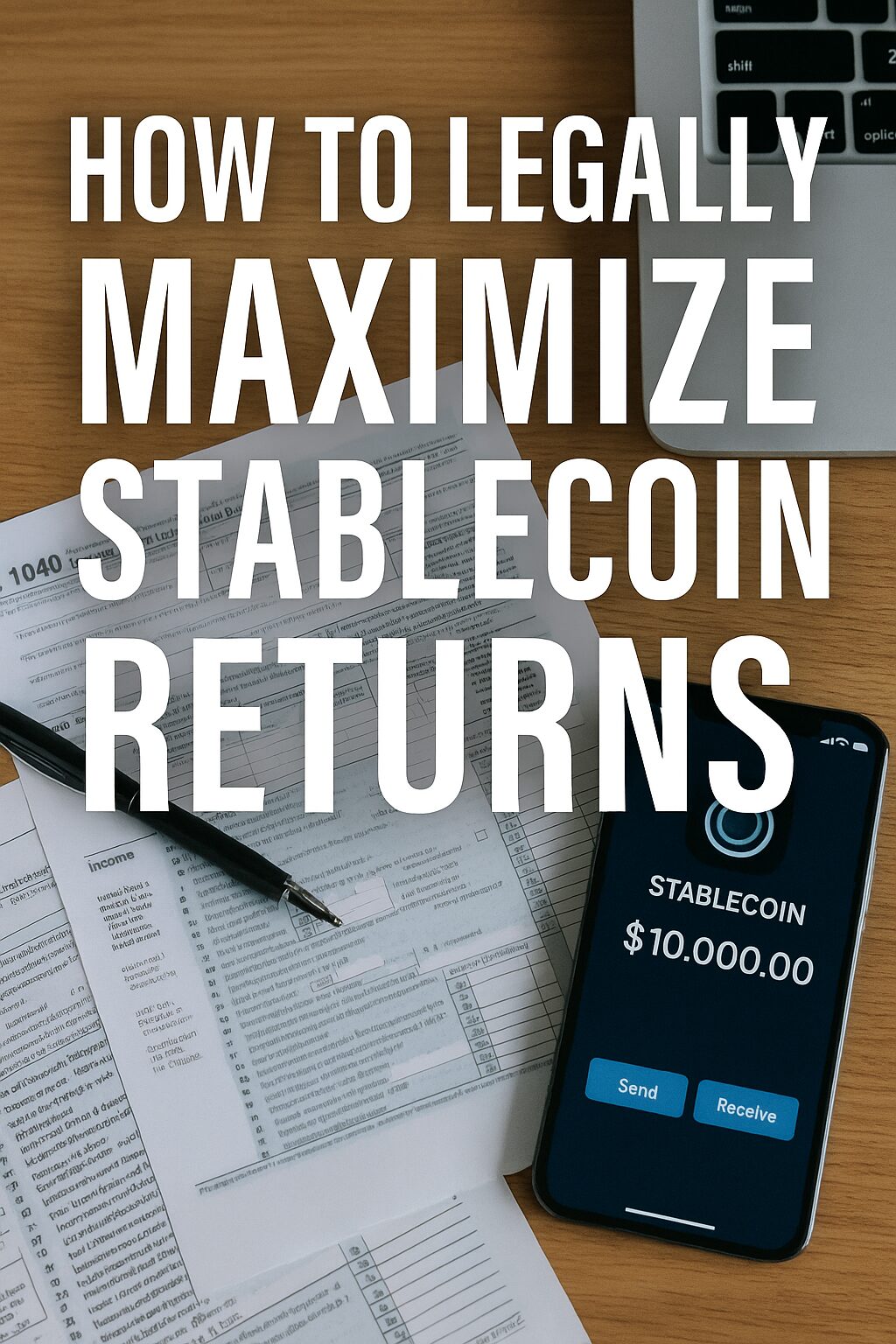Smart Strategies for Risk-Free Crypto Income
Want Bigger Stablecoin Profits Without Legal Trouble?
In this post, we reveal how to boost your stablecoin income while staying fully compliant with international tax laws. Learn how smart investors avoid penalties and unlock hidden returns—legally.
As stablecoins continue to gain popularity as a safe, yield-bearing alternative to volatile cryptocurrencies, one critical question emerges:
How can you maximize your stablecoin earnings while staying fully compliant with international tax laws and regulatory requirements?
This guide will walk you through the strategies smart investors use to optimize returns, reduce tax liability, and maintain 100% legal clarity—all without crossing regulatory lines.
1. Understand How Stablecoin Income Is Taxed
Before you can maximize your returns, you must first understand how your profits are classified in tax jurisdictions:
- Interest from Lending or Staking: Usually taxed as ordinary income.
- Appreciation of Token Value (if applicable): May be taxed as capital gains.
- Rewards or Incentives: Often fall under miscellaneous income, depending on the country.
Tip: In many countries, merely holding stablecoins is not a taxable event, but earning yield is.
2. Choose Tax-Friendly Platforms
Not all yield platforms are created equal. If you’re earning 8–10% APY, make sure the platform provides:
- Clear transaction records (for audit purposes)
- Jurisdictional alignment (based on where you’re taxed)
- Tax documentation support (1099 forms in the U.S., for example)
Best Practices:
| Platform Type | Tax-Friendly Feature |
|---|---|
| DeFi Protocols | Anonymous, but lacks reporting |
| CeFi Platforms | May issue income documents |
| Regulated Custodians | Clear compliance, low risk |
3. Use Stablecoin-Specific Tracking Tools
Track your yield in real time with tools built specifically for stablecoin income:
- CoinTracker – Auto-imports yield and staking income
- Accointing – Tracks across DeFi/CeFi platforms
- ZenLedger – Offers IRS-ready reports
Compliance starts with documentation. The #1 audit red flag is unreported income.
4. Hold Through Tax-Deferred or Tax-Exempt Accounts
In countries like the U.S., U.K., and Canada, you can shelter crypto earnings through specialized accounts:
- 🇺🇸 Roth IRA / Self-Directed IRA (via crypto custodians like Alto)
- 🇨🇦 TFSA / RRSP
- 🇬🇧 ISA
Benefits:
- Zero tax on earnings while funds remain in the account
- Legal growth of stablecoin income
5. Use Legal Entity Structures
If your stablecoin activities are sizable, consider forming a legal entity to access better tax treatment:
- LLC (U.S.): Pass-through income structure
- Private Ltd (U.K.): Capital gains tax advantage
- Offshore Entity: Low or no crypto taxation (Cayman, UAE)
Important: This must be done with proper legal counsel. Never DIY your corporate structure.
6. Avoid “Hidden Tax Traps”
Even honest investors fall into traps like:
- Triggering capital gains when swapping between stablecoins (e.g., USDC → DAI)
- Not converting APY % into fiat value for tax filing
- Ignoring reporting thresholds (like $10K+ holdings in U.S. FBAR regulations)
Always consult a crypto-savvy accountant who understands your local law.
7. Optimize Frequency of Compounding
Some platforms allow you to auto-compound daily, weekly, or monthly.
- Daily Compounding: Higher returns, but more taxable events
- Monthly Compounding: Lower return delta, fewer tax entries
- Strategy: Use monthly for taxable accounts and daily in tax-sheltered accounts.
8. Use Country-Specific Legal Loopholes
Many countries offer legal incentives to attract crypto capital:
- Portugal: Zero tax on crypto gains for individuals
- Germany: Tax-free after 1-year holding period
- Singapore: No capital gains tax; crypto recognized as legal property
Consider geo-arbitrage if you’re location independent.
9. Separate Personal and Business Holdings
If you mix your business stablecoin operations with personal funds:
- It complicates your tax filings
- You risk triggering cross-taxation issues
Use separate wallets, separate tax IDs, and clear internal documentation.
10. Automate and Document Everything
Use this checklist:
- Every transaction recorded in a tax tracker
- Receipts and screenshots for each platform
- Annual summary statements from each yield source
- Currency conversions matched to daily FX rate
The more organized your records, the less likely you’ll face penalties.
Conclusion
Stablecoins offer one of the most accessible and consistent income streams in crypto, but maximizing that income legally and efficiently takes intentional planning.
By leveraging compliant platforms, tracking tools, tax-sheltered accounts, and geo-legal advantages, you can unlock superior returns—without ever putting yourself at regulatory risk.
